2014 Lexus IS Prototype Review – Video

Chief project engineer engineer Junichi Furuyama had but one question for the journalists selected to evaluate a selection of 2014 IS test mules: has Lexus succeeded in building the next 3 Series?
FAST FACTS
| 1. While no engine specs have been revealed, Lexus will continue to offer the IS250 and IS350 models, with the latter receiving an 8-speed automatic transmission. |
| 2. Based on a shared architecture with the GS, the IS grows slightly for 2014 with a more rigid chassis and softer springs. |
| 3. A Drive Mode Selector on IS250 models will offer Eco, Normal and Sport modes, while 350 models will gain Sport+. |
| 4. The car’s “killer app” is a new gauge pod adapted from the LFA with a sliding central tachometer with a digital screen inside as well as additional screens to the side. |
The comparison is a familiar one, with the compact Bimmer having a target on its rear bumper for several decades now. Everyone from Cadillac to Infiniti wants to build the next 3, both for bragging rights and to reap the rewards in sales.
So to make a long story short, the answer is: No. But to make a long story long, there’s one particular reason why, and it’s hardly a bad thing.
And let’s not forget, even BMW didn’t manage to build the next 3 Series, choosing instead to dilute the car’s raw driving characteristics in favor of improved luxury and everyday usability. So if BMW can’t do it while meeting the increasing demands of buyers, how would we expect Lexus to?
In fact, to the surprise of all, the car that most closely resembles the Platonic “form” of the 3 Series is the Cadillac ATS; something Caddy has discovered doesn’t automatically mean it has been anointed with success.
So where does that leave the Lexus IS? One could say in a middle ground, but that terminology reeks of compromise: a word that would be unfair to use against the new Lexus sports sedan.
DECEPTIVE HANDLING
Hitting a large parking lot autocross course in the IS, the unusually wet LA weather, at first both a literal and figurative rain on our parade, later became a ray of sunshine – again, both literally and figuratively.
The low grip surface delivering traction at 30 mph like you’re going 60 through the same corner in the dry, the characteristics of the IS proved difficult to discern at first. With current generation IS250 and IS350 on hand, Lexus also made available two new IS250 and two IS350 test mules.
The current generation of cars, with what appears to be a slightly shorter wheelbase, feel more tossable and nimble. Brought to the limit, however, and they’re also more of a handful.
Behind the wheel of the new IS, either in 250 or 350 grade, and it lulls you into thinking it’s not as agile. Smoother and more planted, once the rear starts to rotate, its easier to modulate.
Essentially, the built-in Lexus qualities of smoothness and refinement work to mute the sensation of what is ultimately a very capable car.
With no specs being released on the engines, we can report that while IS250 models will continue to use a 6-speed automatic, the IS350 now makes use of the brand’s 8-speed box.
Certain to help improve fuel economy, it delivers impressively fast shifts via the paddle shifters, though most buyers are certain to stick to the pre-set gearing of the automatic modes – even if pulling the paddles yourself is met with a throttle blip on the downshift.
Get the Flash Player to see this player.
DRIVE MODE SELECTOR, WITH SPORT+
For 2014 IS models gain a drive mode selector knob, with IS250s sporting three modes while 350 models gain a fourth. With Normal, Eco and Sport, our 350 F-Sport test car also included a Sport+ option, the difference being that rather than just enhancing the throttle response, Sport+ delivers heavier and more responsive steering as well as new settings for the Adaptive Variable Suspension.
While the feel of the heavier steering is more aesthetically pleasing, even the base steering is impressive. Lexus adapted the unit from the GS to deliver a feel that’s smoother, with a clear on-center feel, while reacting better to inputs. As a result it’s another part of the reason the IS fails the 3 Series test, its smoothness and lightness masking its reactive capabilities.
Back to the transmission, Lexus boasts numerous programming enhancements in Sport mode that help keep the car in the ideal gear, and while that was almost unanimously true on the road, when pushed hard in an auto-cross environment, which often demands sudden, extreme changes of steering and throttle, waiting for a downshift was common.
While understandable, we were disappointed that the Sport+ mode didn’t take this to the next level, demanding the car default to the lowest possible gear – though perhaps we’ll have to wait for a next-generation IS-F for responsiveness as hard-edged as that.
In fact, greater overall differentiation between the different drive modes would be ideal. We even found throttle response in the Eco mode to be decent… and expected it to be quite muted. While pleasant, one has to think a more restrictive Eco mode could deliver added fuel economy benefits.
STIFFER CHASSIS MAKES FOR SOFTER SPRINGS
As for the underlying vehicle architecture, again it’s adapted from the GS and while we don’t have hard numbers, there’s a slightly longer wheelbase (making for better rear seat legroom), while Lexus claims it’s more rigid than before. Suspension updates include a new pickup point for the front sway bar that improves its function; while in the rear the springs and shocks have been separated to tune responsiveness independently.
By isolating these aspects, engineers were, surprisingly, able to reduce the spring rates in the car, helping improve the overall ride comfort – likely another contributing factor to the IS’s luxury-over-performance feel.
INTERIOR A NOD TO THE LFA
Inside the car there are some very cool toys, with the car’s “killer app” being the central speedometer adapted from the LFA supercar. A circular single gauge pod slides left to right, with the rpm displayed inside on a digital screen, while small screens on either side display other vehicle data from the trip meter and fuel gauge to radio information.
Another impossible-to-miss feature are the newly designed seats. With improved bolstering, particularly on the F-Sport models we tested, perhaps the biggest advantage is that they sit 20mm lower in the car. The benefit isn’t just a more engaging position for the driver, rather, the reduced height allows for more head room resulting in a more spacious feel to the IS’s cabin.
THE VERDICT
Looking to rebrand its image with heightened focus on the communication between a car and its driver, based on our time beyond the wheel the 2014 IS does not meet the lofty goal it set out to achieve. It is not the new 3 Series, if for no other reason than that it does achieve true-to-the-brand levels of smoothness and refinement.
And this is before we’ve had a chance to enjoy the many other aspects the third generation IS will offer, from luxury materials and craftsmanship, to new technology and safety features that could just make it the most well-rounded car in the segment.
While the goal of “the most fun” is a noble one to strive for, perhaps the best compact luxury sports sedan is not the one that offers the most extreme dynamic personality, but the one that delivers in all areas to a higher level than its rivals. After all, that’s what BMW aimed to do with the new 3 Series and while the IS targeted the previous generation E90 (2006 to 2011) model, perhaps its failure to meet that goal is actually its own success.
LOVE IT
- LFA Gauges
- Capable handling with Lexus luxury
- Lower seating position
LEAVE IT
- Sport+ not sporty enough
- Luxury feel dilutes sporty capabilities

With AutoGuide from its launch, Colum previously acted as Editor-in-Chief of Modified Luxury & Exotics magazine where he became a certifiable car snob driving supercars like the Koenigsegg CCX and racing down the autobahn in anything over 500 hp. He has won numerous automotive journalism awards including the Best Video Journalism Award in 2014 and 2015 from the Automotive Journalists Association of Canada (AJAC). Colum founded Geared Content Studios, VerticalScope's in-house branded content division and works to find ways to integrate brands organically into content.
More by Colum Wood














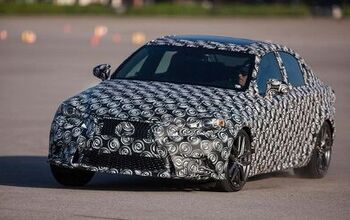
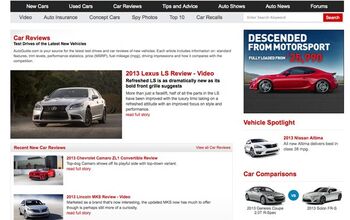
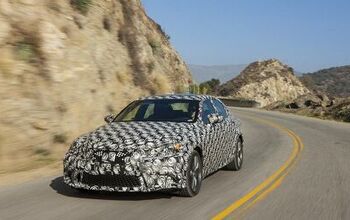



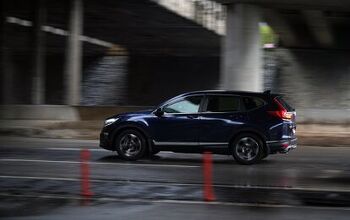





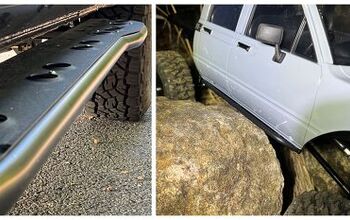




Comments
Join the conversation